C Exercises: Delete first node of Singly Linked List
7. Delete Head Variants
Write a program in C to delete the first node of a Singly Linked List.
Visual Presentation:
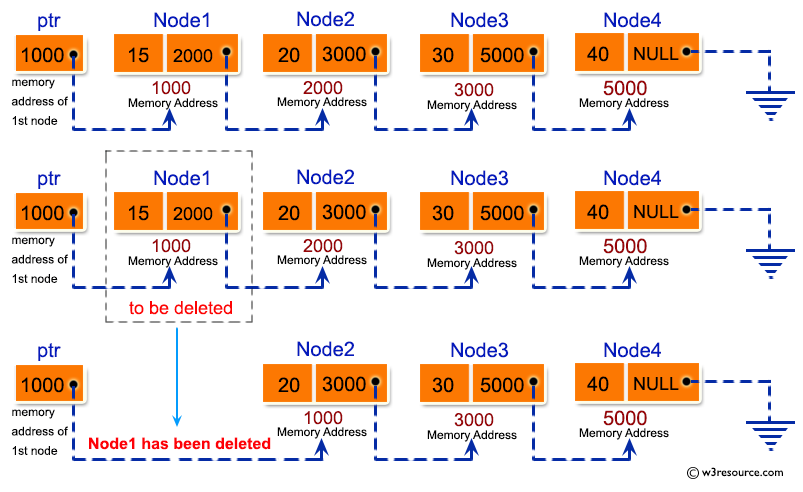
Sample Solution:
C Code:
#include <stdio.h>
#include <stdlib.h>
struct node
{
int num; // Data of the node
struct node *nextptr; // Address of the node
}*stnode; // Pointer to the starting node
// Function prototypes
void createNodeList(int n); // Function to create the linked list
void FirstNodeDeletion(); // Function to delete the first node
void displayList(); // Function to display the linked list
// Main function
int main()
{
int n, num, pos;
printf("\n\n Linked List : Delete first node of Singly Linked List :\n");
printf("------------------------------------------------------------\n");
printf(" Input the number of nodes : ");
scanf("%d", &n);
createNodeList(n);
printf("\n Data entered in the list are : \n");
displayList();
FirstNodeDeletion();
printf("\n Data, after deletion of first node : \n");
displayList();
return 0;
}
// Function to create a linked list with n nodes
void createNodeList(int n)
{
struct node *fnNode, *tmp;
int num, i;
stnode = (struct node *)malloc(sizeof(struct node));
if(stnode == NULL) // Check whether stnode is NULL for memory allocation
{
printf(" Memory can not be allocated.");
}
else
{
printf(" Input data for node 1 : ");
scanf("%d", &num);
stnode-> num = num;
stnode-> nextptr = NULL; // Links the address field to NULL
tmp = stnode;
for(i = 2; i <= n; i++)
{
fnNode = (struct node *)malloc(sizeof(struct node));
if(fnNode == NULL) // Check whether fnNode is NULL for memory allocation
{
printf(" Memory can not be allocated.");
break;
}
else
{
printf(" Input data for node %d : ", i);
scanf(" %d", &num);
fnNode->num = num; // Links the num field of fnNode with num
fnNode->nextptr = NULL; // Links the address field of fnNode with NULL
tmp->nextptr = fnNode; // Links previous node i.e. tmp to the fnNode
tmp = tmp->nextptr;
}
}
}
}
// Function to delete the first node of the list
void FirstNodeDeletion()
{
struct node *toDelptr;
if(stnode == NULL)
{
printf(" There are no nodes in the list.");
}
else
{
toDelptr = stnode;
stnode = stnode->nextptr;
printf("\n Data of node 1 which is being deleted is : %d\n", toDelptr->num);
free(toDelptr); // Clears the memory occupied by the first node
}
}
// Function to display the linked list
void displayList()
{
struct node *tmp;
if(stnode == NULL)
{
printf(" No data found in the list.");
}
else
{
tmp = stnode;
while(tmp != NULL)
{
printf(" Data = %d\n", tmp->num); // Prints the data of the current node
tmp = tmp->nextptr; // Advances the position of the current node
}
}
}
Sample Output:
Linked List : Delete first node of Singly Linked List :
------------------------------------------------------------
Input the number of nodes : 3
Input data for node 1 : 2
Input data for node 2 : 3
Input data for node 3 : 4
Data entered in the list are :
Data = 2
Data = 3
Data = 4
Data of node 1 which is being deleted is : 2
Data, after deletion of first node :
Data = 3
Data = 4
Flowchart:
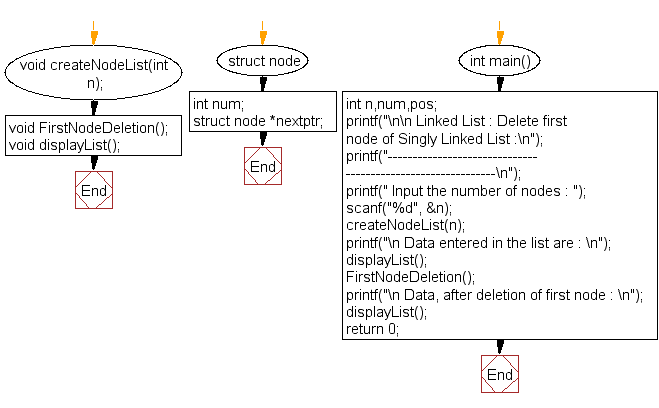
>
createNodeList():
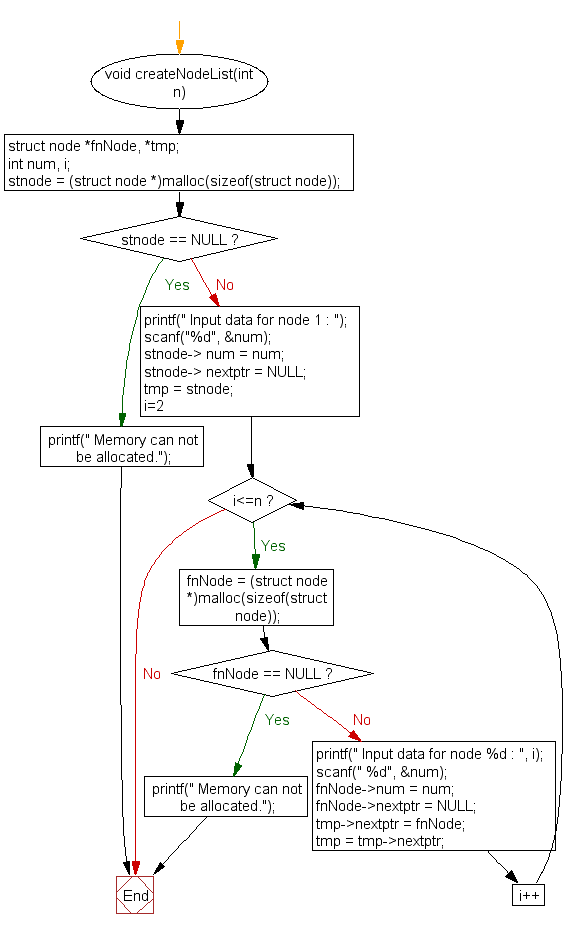
FirstNodeDeletion() :
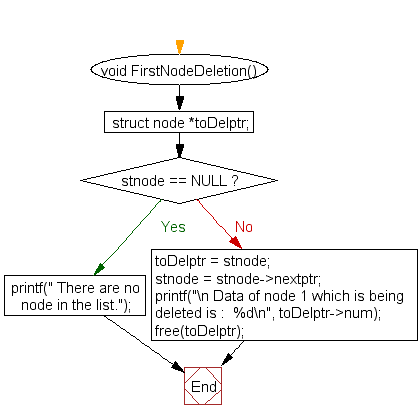
displayList() :
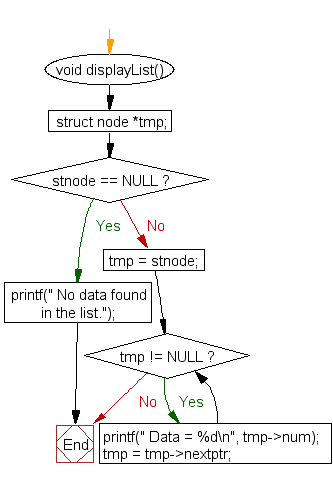
For more Practice: Solve these Related Problems:
- Write a C program to delete the first node of a singly linked list and return the deleted node’s value.
- Write a C program to conditionally delete the head node only if its value is below a specified threshold.
- Write a C program to repeatedly delete the first node until the list becomes empty, displaying each deleted value.
- Write a C program to safely delete the head node with appropriate error handling for an empty list scenario.
Go to:
PREV : Middle Insertion Variants.
NEXT : Middle Deletion Challenges.
C Programming Code Editor:
Have another way to solve this solution? Contribute your code (and comments) through Disqus.
What is the difficulty level of this exercise?
Test your Programming skills with w3resource's quiz.
